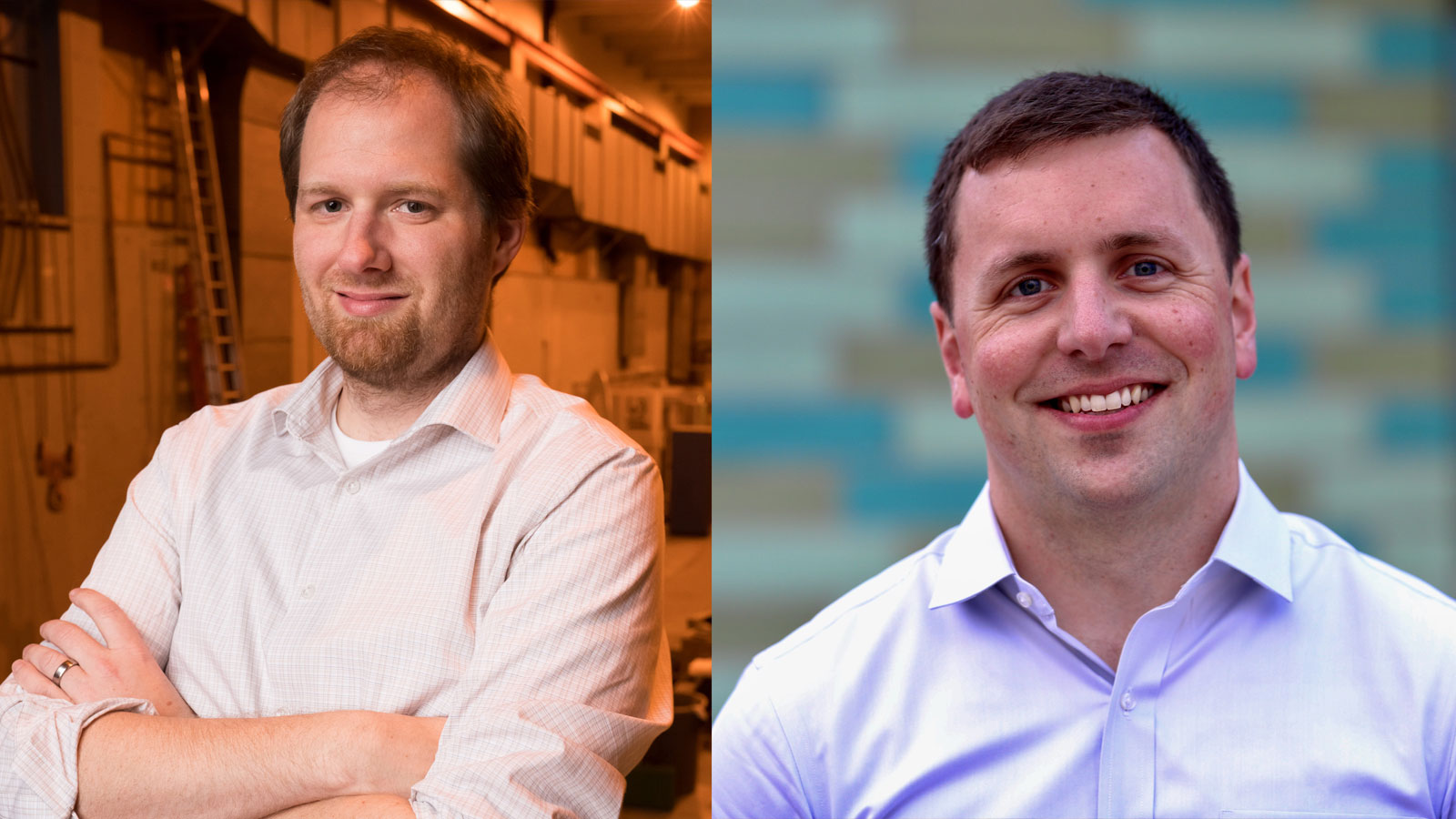Calendar Icon
Jan 28, 2021
Person Bust Icon
By College of Engineering
![]() RSS
Submit a Story
RSS
Submit a Story
It all began with Math 106 freshman year for Bob Mumgaard and Steve Renter. For the two engineering students embarking on a college journey it was an innocent beginning, but for the future of clean energy, it was an auspicious start.
“Bob and I met at UNL, in Math 106. It was the first day of class,” recalled Renter, COO of Commonwealth Fusion Systems (CFS). “We were even roommates at one point.”
Now the two UNL graduates are embarking on a bigger project together, working in tandem for CFS and with researchers at MIT’s Plasma Science and Fusion Center to develop a compact fusion device called SPARC. The project was highlighted in an article in The New York Times this fall as the scientific community weighed in on the prospects of fusion energy used to generate electricity by 2030.
“The world needs clean energy,” explained Mumgaard, who graduated with his bachelor’s degree in mechanical engineering from UNL in 2008. “For far too long, the world has relied on fossil fuels and other resources contributing to environmental issues. Through innovation, technology and science, we can break that.”
Before working together on SPARC and building CFS into a company, Renter and Mumgaard remained friends even as both went into different areas of interests as graduate students in the Boston metro area – Renter earned his MBA at Harvard, and Mumgaard, a PhD in plasma physics at MIT.
“We had a standing meeting every Thursday night at a pub in Boston called the Muddy Charles,” Renter said with a laugh. “Together, over a couple of beers, we talked about what was happening and what we were doing. He was working on fusion and I was working on startups.”
Before he learned how to build, fund and run technology companies, Renter, who graduated from UNL in 2007 with a bachelor’s degree in mechanical engineering, worked as a drilling engineer at BP for six years. Ironically, he was working in the oil industry when he had a career change of heart.
“I don’t think I realized what entrepreneurships would be like,” Renter said, recalling his days as an undergraduate student at UNL. “It wasn’t on my radar. If anything, I thought I was going to be an automotive engineer because I always loved working on cars.”
Mumgaard, too, had different ambitions when he was a student at UNL. While he liked building things as a kid, going all the way back to LEGOs, and wanted to keep building things as an adult, Mumgaard also developed a love of physics while in college. Thanks to a “History of Physics” class at UNL, Mumgaard began to see the world differently.
“I began to see physics as a way to help with the way things are engineered,” he added.
At MIT, Mumgaard began working with some of the best physicists and engineers in the world and, with early funding six of them decided to start developing a commercial fusion energy system based on their experience and research in fusion programs. This was in 2015 and, three years later, CFS was born out of a vision he and his co-founders saw of the future.
“When I was at Nebraska, I thought I’d graduate, go for my PhD., be a professor and do research,” Mumgaard said. “Even when I was at MIT, I still thought I’d do that but then I realized I could have a bigger impact on the world if I did it with our own company using fusion and other technologies.”
The two Nebraskans – Mumgaard from Omaha and Renter from Grand Island, have gone from the simple days of working on cars in their garage with friends to building a source of unlimited energy for the world. Fusion is the same process that powers the Sun and the stars and a potential commercial power source that’s safe and non-carbon emitting.
“We’re already seeing the move to clean energy worldwide,” Renter pointed out. “You see it in the Midwest with massive wind turbine farms across the landscape. The world in 10 to 20 years will be very different than what it is now.”
Submit a Story
